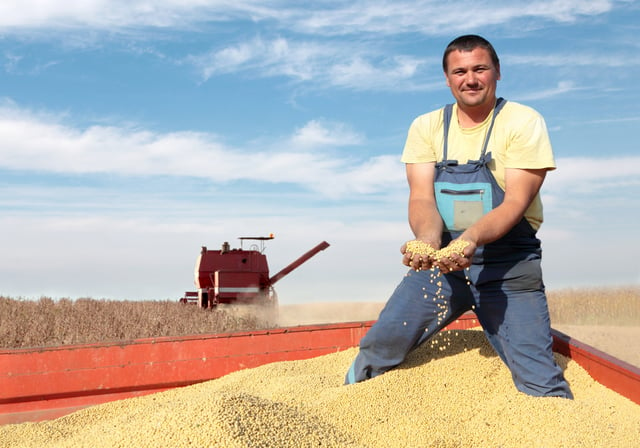A lot of Canadian companies export their goods, especially those in the food production sector. For example, Canada exported $2.3 billion worth of soybeans in 2015. The majority of pulse exports are shipped in ocean containers to Asian markets. In order to maximize shipping space and export as efficiently as possible, it is in the exporter’s best interest to fill the ocean container as much as possible. In our business, we know it’s very difficult to get a bulk bag that has “pumpkined” into an ocean container vessel.

If you have ever used bulk bags at your operation, you know that when they are filled with product they expand. Depending on the product and other factors, there can be as much as a 15% increase in the size of the bulk bag’s footprint. If you start with a bag that is 36” x 36” wide, you can end up with a footprint of 40” x 40” or larger when it is filled up. Now if you are shipping on a standard 40” x 48” pallet, that overhang can cause some major headaches when fitting pallets side by side. The solution? A baffle bag.
It’s not baffling, it’s a baffle bag!
A baffle bag is constructed the same way as a regular bulk bag. Polypropylene is extruded into tapes, those tapes are woven into fabric, and then that fabric is sewn together to make a bulk bag. The main difference between a baffle bag and a regular bag is what is inside. On the four corners inside the bag, there are baffles that stop the bag from expanding out. The force pushing the bag outwards is negated by the baffle anchored to the opposite side of the force. This repeats in all four corners of the bag and keeps the square shape of the footprint. This picture of the inside of a filled bag gives a good example of what a baffle looks like in action. You can see how the granular product flowed around and through the baffle openings while keeping the corners tight.
Baffles are made from the same super-strong polypropylene as the bag, so they are very durable and designed to keep 1000 kgs of material in place. There are several types of baffles that can be made depending on the product. A simple baffle like the one in the picture above is made by cutting a piece of fabric to size and adding heat-cut holes. There are also web style baffles that are ideal for food –grade applications as there is less chance of any tapes coming off from the friction of material passing over it. Also, they allow a product to flow a little better than the standard baffles as there is less surface area for material to come in contact with when discharging.
Maximize Space, Minimize Shipping Cost
Not only do baffle bags work great for ocean containers, their rigid structure is perfect for maximizing shipping space in trucks as well. This picture of a filled bag shows exactly how well this type of bulk bag fits on a pallet. If you could squeeze an extra tonne of product on every truck that leaves your dock you can really save on shipping in the long run. Not only do you benefit from utilizing baffle bags, your clients will as well. Imagine how happy they will be when they can empty the cargo vessel with ease, the bulk bags are still stacked, and nobody on the ground has to fight with bulk bags to get them unloaded.

Also, if you are exporting food products, you must have the baffle bag made in a suitable food-grade facility that adheres to AIB or BRC production standards. Some standards only take into account what the raw material of the bag is, and others are only concerned with what’s going into the bag. Ensuring your food grade bulk packaging is made in a clean environment is just as important as starting with clean raw materials. Make sure you download our White Paper on food-grade bulk packaging so you can see the steps it takes to get truly clean bulk packaging.
To learn more about what we can do for you, stick around our website and contact us today. Let us show you how to save time, money, and space with your next shipment across the globe or just around the corner!

